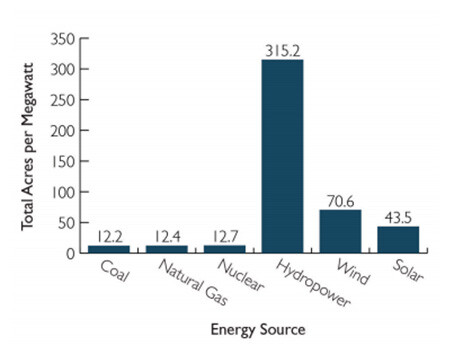
Let’s be clear — It’s clean: Nuclear is critical to fighting climate change

By John Gorman President and CEO
Canadian Nuclear Association
If the world is serious about reaching net-zero carbon emissions by 2050, electricity will have to play a much bigger role. That is only achievable with nuclear in the mix. But the world will not accept that until nuclear is clearly and consistently defined as the clean energy source that it is.
According to the International Energy Agency, despite the remarkable growth of solar and wind power, the overall share of clean energy sources in total electricity supply is roughly the same as it was 20 years ago. This can be explained in large part by the premature closure of nuclear power generation in western nations — a trend perpetuated by politics and public perceptions over science.
Germany is a stark example of this phenomenon. Antinuclear politics led to the premature closure of nuclear power plants, leaving Germany with limited options for replacing a significant source of clean electricity. The result: Germany is producing an additional 36 million tons of carbon dioxide per year, about a five per cent increase in emissions. Even worse, burning more coal led to increases in particle pollution and sulfur dioxide and is estimated to have killed an additional 1,100 people per year from respiratory or cardiovascular illnesses.
I am a long-time environmentalist. I am a former solar industry advocate. And I am a self-studied convert to nuclear.
Nuclear delivers carbon-free, reliable energy 24 hours a day and has historically been one of the largest contributors of carbon-free electricity globally.
Despite that, nuclear is not consistently and clearly being defined as the clean energy source that it is. That’s perpetuating misconceptions, shaping politics and hindering urgent environmental progress.
Nuclear energy is clean energy
To quote Bill Gates, “Nuclear is ideal for dealing with climate change, because it is the only carbon-free, scalable energy source that’s available 24 hours a day.”
But nuclear is more than non-emitting. It’s the lowest land-use way to generate electricity. Per kilowatt hour, it consumes less materials and generates less waste than other clean energy sources.

A comparison of direct greenhouse gas emissions (red bars) and full-life-cycle emissions (blue bars) produced by different energy technologies. Marcus, GH. How green is nuclear energy? Physics World, April 2017. Available at http:// live.iop-pp01.agh.sleek.net/physicsworld/reader/#!edition/editions_Nuclear_2017/article/page-19316

Strata. The footprint of energy: land use of U.S. electricity production, June 2017. Available at: https://www.strata.org/pdf/2017/footprints-full.pdf
The world needs nuclear
Nuclear power has historically been one of the largest contributors of carbon-free electricity globally, providing about one-third of the world’s emissions-free electricity. The International Energy Agency (IEA) says nuclear has significant potential to contribute to power-sector decarbonization. A doubling in annual nuclear capacity is needed to be on track with the IEA’s Sustainable Development Scenario.
Energy experts agree that nuclear energy contributes to reducing greenhouse gas emissions, and more nuclear is needed to transition the world to clean energy.
“The use of nuclear power reduces carbon dioxide emissions by about two gigatonnes per year,” Acting International Atomic Energy Agency Director General Cornel Feruta said. “It is difficult to see how the goal of reducing greenhouse gas emissions can be achieved without a significant increase in the use of nuclear power in the coming decades.”
Canada’s position
The federal government says nuclear energy is an important part of Canada’s current clean energy mix and will continue to play a key role in achieving Canada’s low-carbon future.
“I have not seen a credible plan for net zero without nuclear as part of the mix,” Natural Resources Minister Seamus O’Regan said.
In December 2018, the House of Commons Standing Committee on Finance recommended that the Government of Canada develop and deliver a National Energy Strategy, which would consider all forms of low-carbon energy to help realize the goal of a clean environment and a strong economy through the deployment of new technologies, including nuclear power.
Nuclear must be included
Nuclear must be included in all clean energy definitions in all government programs across all departments. We need it to fight climate change. We need it to stimulate the economy post-COVID. We need it for the electrification of our systems.
Despite that, nuclear is often excluded, either explicitly or in practice, from formal definitions of clean or sustainable energy. The implications of this are not small. Misconceptions are perpetuated, clean businesses aren’t financially supported, and environmental progress is limited.
What could be holding governments and other prominent organizations back? The CNA recently conducted qualitative research with Canadian thought leaders in policy, climate change and energy to gauge their perceptions about nuclear. While 82 per cent of these high-profile respondents said they support nuclear, 65 per cent thought the public’s perception of nuclear was negative. These conflicting views put Canadian influencers in a difficult position, with more than half reporting that they feel uncomfortable openly supporting nuclear energy given public perception.
That needs to change.
We have a role to play in this. The nuclear industry needs to better address misconceptions about nuclear safety, spent fuel and byproducts. We need to do a better job of telling our story, so Canadians can see the connection between nuclear innovation and a cleaner climate, cancer detection and treatment, water desalination and so much more.
And we need educated and prominent citizens and governments to continue to stand strong and bold in their knowledge and understanding of the value of nuclear to the economy and the environment.
Naming nuclear what it is — clean — is what it will take to ensure our thinking is defined by evidence, not prejudice or misconception.


